The short answer, yes. Regardless of your business type, you need an occupational health management program. The specifics may change; for example, your program may be more about ergonomics than audiograms or physicals rather than fit testing, but the need is there in every business. because...
Your employees are your business, whatever business you're in.
It’s 2019, and the U.S. economy is again in a cycle of low unemployment, which means that employers are striving to keep their current employees and struggling to find new ones. In these economic cycles, occupational health management, team building, and benefits are high-interest items. However, the reality is that smart employers are aware that taking care of their employees and keeping the best employees on the team is a priority continually. Occupational health management helps employers protect their team, increase productivity, and reduce unemployment claims by monitoring the environment and employees’ health, reducing the incidents of accidents in the workplace, and providing solutions to protect employee health. The costs of ignoring occupational health are very real.
The Cost of Inaction for Employers
Occupational Health Management is regulated, in part, by certain industries, but the implementation of a complete occupational health management program has proven financial benefits and team morale. Conversely, the cost of inaction is extremely high and proven as well. Accident reduction, employee health improvement and improved productivity are three key benefits of an occupational heath management program.
Accident Reduction & Improved Safety
One of the key benefits of occupational health management is accident reduction. By creating a safer workplace, employers can protect their team and their bottom line.
- Employers paid $51.1 billion in 2010 — nearly $1 billion per week — for direct workers compensation costs (medical plus indemnity) for the most disabling workplace injuries and illnesses
- Each prevented lost-time injury or illness saves $37,000, and each avoided occupational fatality saves $1,390,000 (injury facts, 2013 edition. National safety council, Itasca, Ill.)
- According to the Centers for Disease Foundation, worker illness and injuries cost U.S. employers $225.8 billion annually, or $1,685 per employee. https://www.entrepreneur.com/article/309685
- “Workplace incidents cause an enormous amount of physical, financial, and emotional hardship for individual workers and their families. Combined with insufficient workers’ compensation benefits and inadequate medical insurance, workplace injuries and illnesses cannot only cause physical pain and suffering but also loss of employment and wages, burdensome debt, inability to maintain a previous standard of living, loss of home ownership, and even bankruptcy.” (injury and illness Prevention Programs White Paper (January, 2012). occupational safety and Health Administration.)
Several lawsuits in 2018 against employers for personal injury were more than $100 million, and one of the top lawsuits was against Monsanto for $289 million. In 2017, there were more than 800,000 lawsuits against employers for worker’s compensation claims. The number of claims, as well as the frequency of such claims being filed, continues to increase annually. The impetus is on employers to protect their workers from accidents, and occupational health management is the best way to do that throughout a business. If just one workplace injury can be avoided through an investment in safety on average it saves your company $37,000. (Injury facts, 2013 edition. National safety council, Itasca, Ill.) Additionally, occupational health management can help employers improve the health of their team members.
Ready for more about adding Occupational Health Management?

.png?width=500&height=500&name=Blue%20and%20White%20Classic%20Shield%20Financial%20with%20Star%20Logo%20Design%20(1).png)


